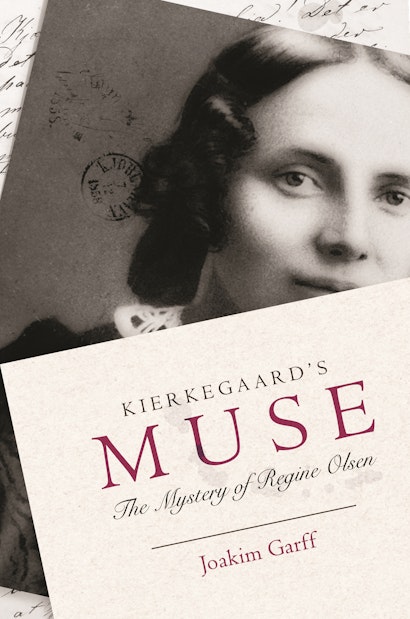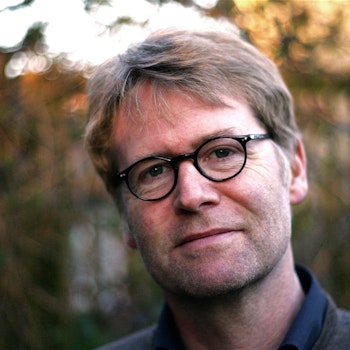Kierkegaard’s Muse, the first biography of Regine Olsen (1822–1904), the literary inspiration and one-time fiancée of Danish philosopher Søren Kierkegaard, is a moving portrait of a long romantic fever that had momentous literary consequences. Drawing on more than one hundred previously unknown letters by Regine that acclaimed Kierkegaard biographer Joakim Garff discovered by chance, the book tells the story of Kierkegaard and Regine’s mysterious relationship more fully and vividly than ever before, shedding new light on her influence on his life and writings.
Like Dante’s Beatrice, Regine is one of the great muses of literary history. Kierkegaard proposed to her in 1840, but broke off the engagement a year later. After their break, they saw each other strikingly often, inside dimly lit churches, on the streets of Copenhagen, and on the paths along the old city ramparts, passing by without uttering a word.
Despite or because of their separation in life, Kierkegaard made Regine his literary life companion, “that single individual” to whom he dedicated all his works. Garff shows how Regine became a poetic presence in the frequent erotic conflicts found throughout Kierkegaard’s writings, from the famous “Seducer’s Diary” account of their relationship to diary entries made shortly before his death in 1855. In turn, Regine remained preoccupied with Kierkegaard until her own death almost fifty years later, and her newly discovered letters, written to her sister Cornelia, reveal for the first time a woman of flesh and blood.
A psychologically acute narrative that is as gripping as a novel, Kierkegaard’s Muse is an unforgettable account of a wild, strange, and poignant romance that made an indelible mark on literary history.
Joakim Garff is the author of the acclaimed Søren Kierkegaard: A Biography (Princeton), which has been translated into many languages. He is associate professor at the Søren Kierkegaard Research Centre at the University of Copenhagen and coeditor of a project to publish definitive new Danish-language editions of all of Kierkegaard's writings. He lives in Copenhagen.
"The book is a moving, penetrating insight into one of the greatest and most perplexing love stories in literary history, written with the same scholarly vigilance and imaginative affection that made Garff’s biography of Kierkegaard such a monumental achievement. Garff’s new book is the first to render its particular kind of attention to Regine [Olsen], and it goes further than any previous attempt to explore and understand the relationship between Regine and Kierkegaard."—Morten Høi Jensen, Los Angeles Review of Books
"A measured, perceptive portrait of Regine Olsen, Kierkegaard's jilted fiancée, reanimating her not as the philosopher’s immortalized muse but as a living, breathing person."—Publishers Weekly
"Beautifully translated."—Jane O'Grady, Literary Review
"This is a unique and beautiful love story, very well-told by the Joakim Garff and artfully translated by the Kierkegaard scholar, Alastair Hannay. I very highly recommend it."—John Mullen, Metapsychology
"Garff is both a punctilious scholar and superb writer."—Frank Freeman, Commonweal Magazine
"Søren Kierkegaard broke his engagement to Regine Olsen, but he was true to his vow to ‘take her into history' with him. For more than a century, history has seen Regine through Kierkegaard’s eyes, and now Joakim Garff’s splendid biography finally shows us Regine’s side of her extraordinary story. Moving across oceans and decades, and between the prosaic and the sublime, Garff skillfully links Regine’s life in a West Indian colony with Kierkegaard’s life in Copenhagen. This marvelous book wisely refuses to dispel the mystery of Regine, queen of Kierkegaard’s heart, and instead takes us deeper into it."—Clare Carlisle, King’s College London
“Joakim Garff provides a new and far more nuanced understanding of the mutual nature of the relationship between Kierkegaard and Regine Olsen. By drawing on previously unpublished letters, Joakim Garff is able to show that Olsen embraced her role as Kierkegaard’s muse and remained deeply preoccupied with him throughout her life.”—Bruce H. Kirmmse, author of Kierkegaard in Golden Age Denmark


